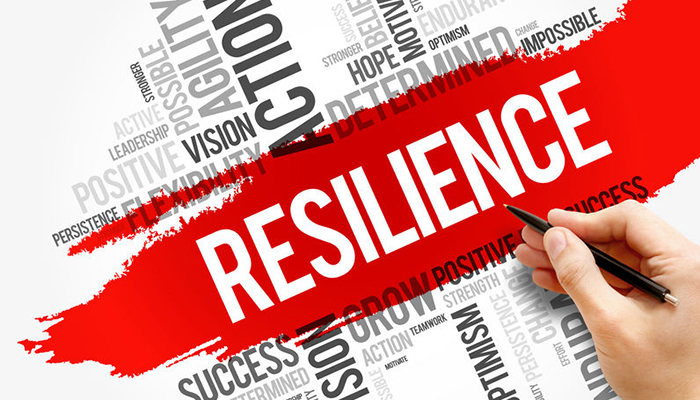 I stumbled upon a TEDX Talks, given by Lucy Hone, the Director of the New Zealand Institute of Wellbeing and Resilience. You learn in the program she had been studying the area of resilience before the famous earthquakes in Christchurch of 2011. Working with victims and communities post event helped her create practical applications of what she had learned academically. In 2014 she suddenly and tragically lost a young daughter in a terrible car accident. It was then she realized she needed to teach herself what she knew professionally if she wanted to move forward and help her sons. Her continued research and personal experience helped her narrow her understanding of resilience into three categories of mindset and behavior.
I stumbled upon a TEDX Talks, given by Lucy Hone, the Director of the New Zealand Institute of Wellbeing and Resilience. You learn in the program she had been studying the area of resilience before the famous earthquakes in Christchurch of 2011. Working with victims and communities post event helped her create practical applications of what she had learned academically. In 2014 she suddenly and tragically lost a young daughter in a terrible car accident. It was then she realized she needed to teach herself what she knew professionally if she wanted to move forward and help her sons. Her continued research and personal experience helped her narrow her understanding of resilience into three categories of mindset and behavior.
Thinking about present-day circumstances and challenges, specifically in the world of work, I thought I would share these three steps and put them into at-the-moment context.
#1 — Shit Happens. Maybe a pandemic in an economic crisis with political turmoil isn’t an every-year occurrence but it is our present reality and we kinda know why it happened and how it might have been reverted. Looking at others we know, things go wrong for them too and some people have it very hard. Hopefully, it is not you. The challenge is to put your situation in perspective. Which side of the distribution table at the food pantry you are standing at can give you a particularly good sense of reality for you and others. Our primitive survival tactics tell us there is danger around every corner. Our resilient self tells us we are not the only one in this and it could be worse. The phrase “in it together” is simple and powerful. When we acknowledge we are not alone, and we can’t and shouldn’t expect to solve all problems by ourselves, we get change. People are cooperating, suggesting new ways of doing business, and forming new bonds. Yes, bad things happen, and many good solutions come from terrible situations.
Whether your team has been reduced to a group of one, you, with the same amount of work, or your salary has been reduced and your bonus disappeared, admitting the fact that within a lifelong career there will always be the unpredictable, and events beyond your control, can help you control anxiety, accept reality, rise from adversity. It also lets you move to Step #2 of the Hone Resilience Model.
#2 – Choosing Well. The Serenity Prayer, a basic tenet of the Alcoholic Anonymous program says it clearly. “Grant me the serenity to accept the things I cannot not change. The courage to change the things I can. And the wisdom to know the difference.” The resilience expert would recommend careful selection of what and where you place your attention. Know what to focus on changing and admitting to yourself there are things beyond your control. At work it can mean reexamining your priorities. Applying the delete, delegate, do exercise with an emphasis on the delete.
Many of my executive coaching clients are having more contact with their supervisors, something they have wanted for a long time. They have learned seniority doesn’t necessarily make for the best decisionmakers or emotional stability in a crisis. They find themselves getting asked their opinions and for solutions more often. Choosing well for optimum resilience also means acute awareness of your physical energy usage. Exhaustion is not the answer to any problem.
Dr. Hone warns we tend to quickly notice the negative and have some difficulty seeing the positive side of hard times. She encourages looking for the benefits, finding gratitude, and embracing the good when making a choice. She refers to the work of the Positive Psychology psychologist, Martin Seligman, who advocated for people to think of three good things per day. His research shows it increased gratitude, happiness, and reduced depression.
The takeaway I liked most and embraced in this resilience model is #3.
#3 — Helping or Harming Me? This simple practice of asking yourself, “is this helping or harming me?” puts you at the helm. You have a choice and the decision is about your well-being, being kind to yourself, as well as helping you find the solution. You are the boss of your behavior, not someone else and that can feel powerful.
For some of us, daily social Zoom meetings at the end of the day is relaxing (helpful). For others it is another obligation and theft of time alone (harmful). Simply asking yourself the helpful/harmful question can guide you as well as protect you.
Resilience is the ability to cope in a crisis. The goal is to go back to pre-crisis condition or create a new, better environment. The resilience model suggests to those trying to deal with adversity to admit bad things happen to everyone, make good choices, and ask whether what you are doing is helping or harming you.
Hopefully, this will guide you in these confusing and challenging times.
Leave a Reply